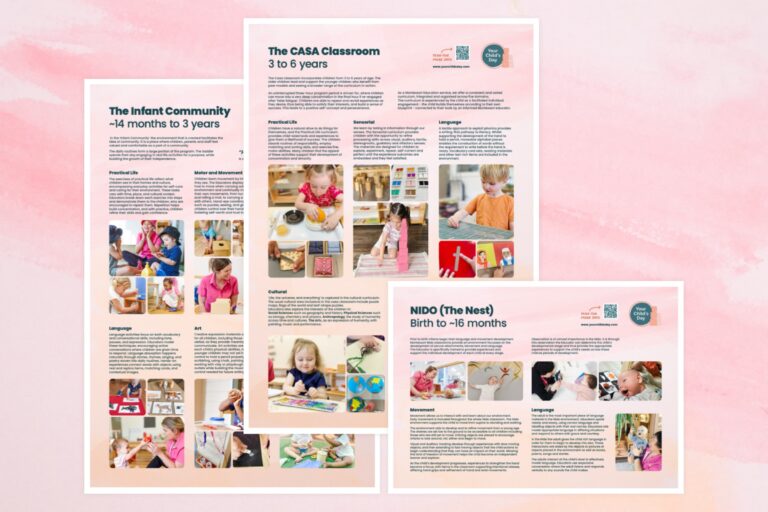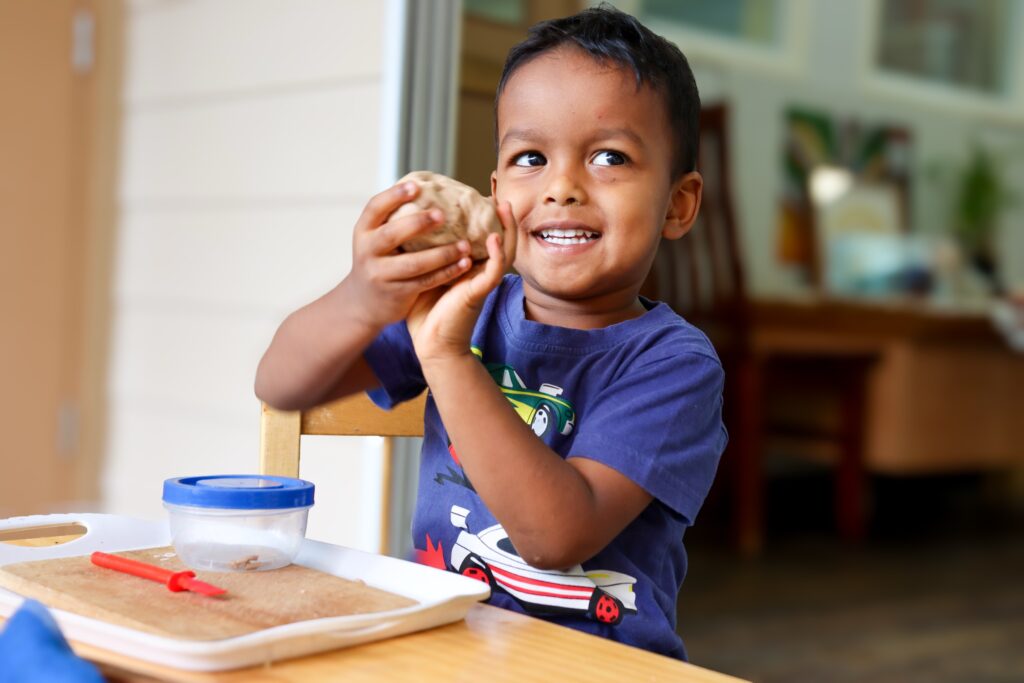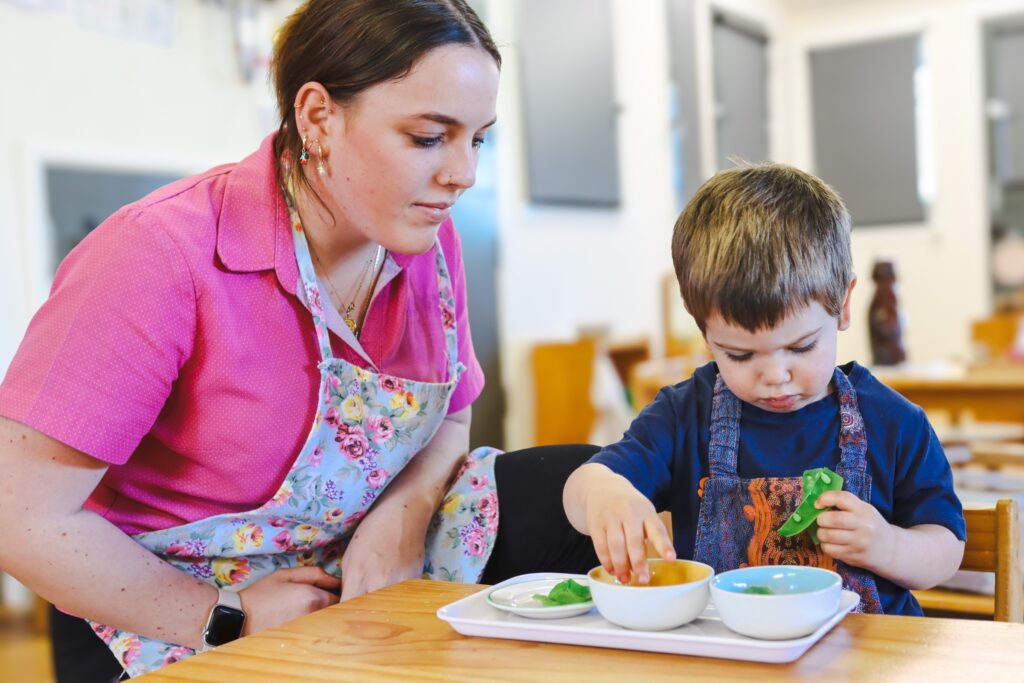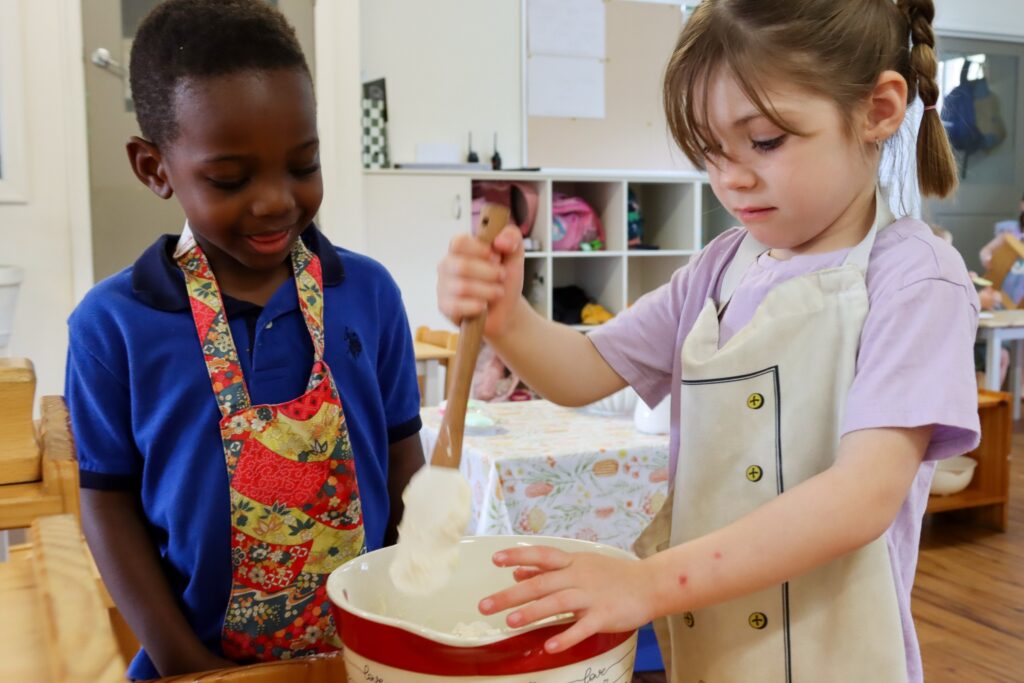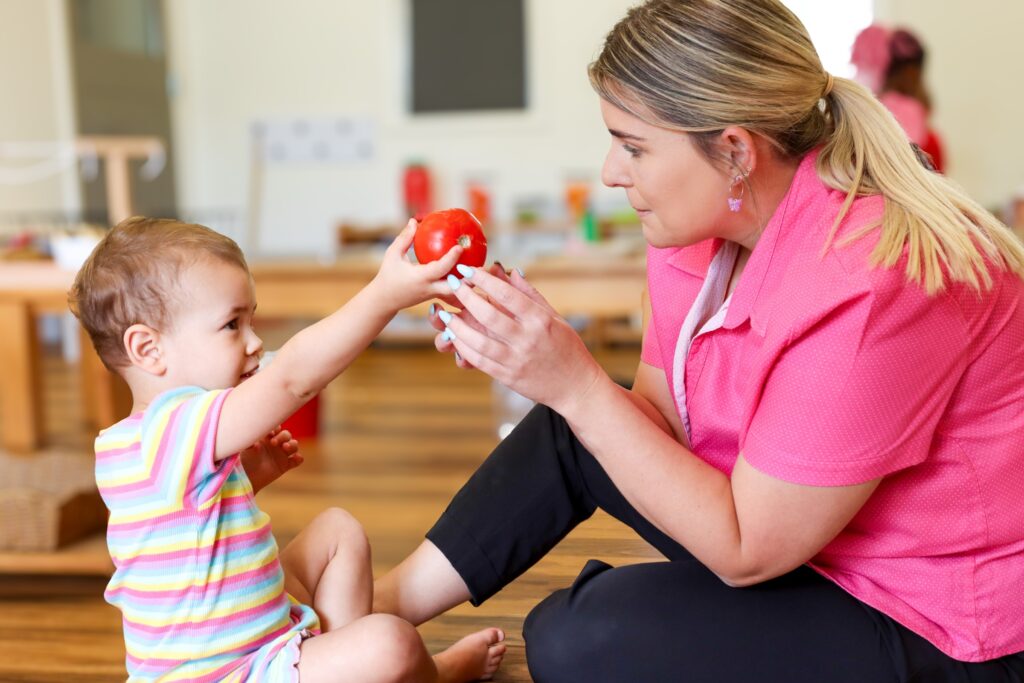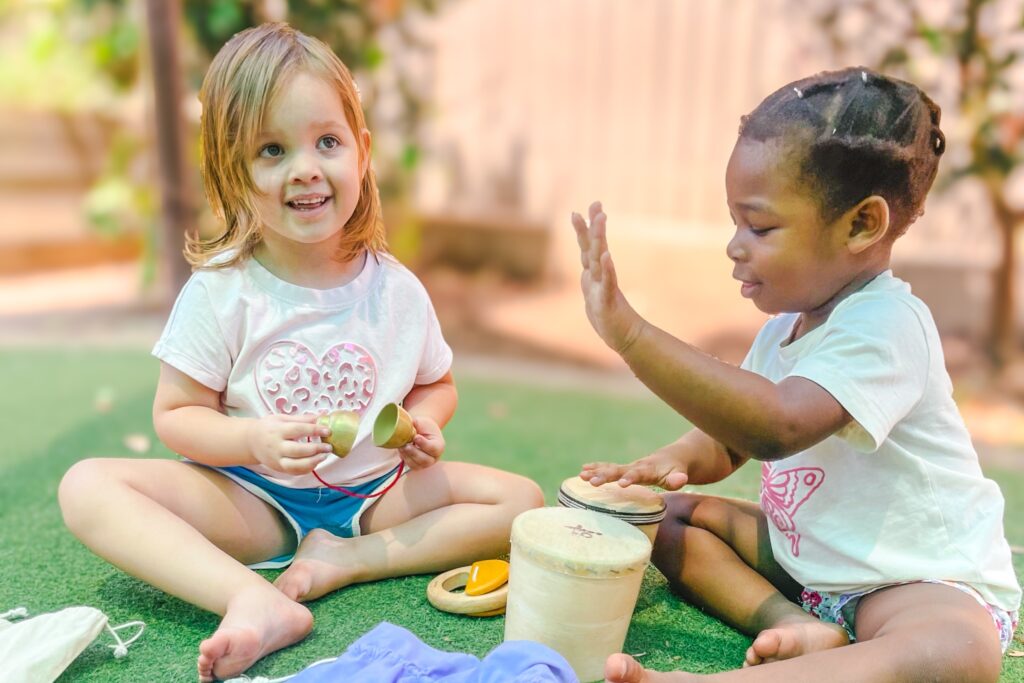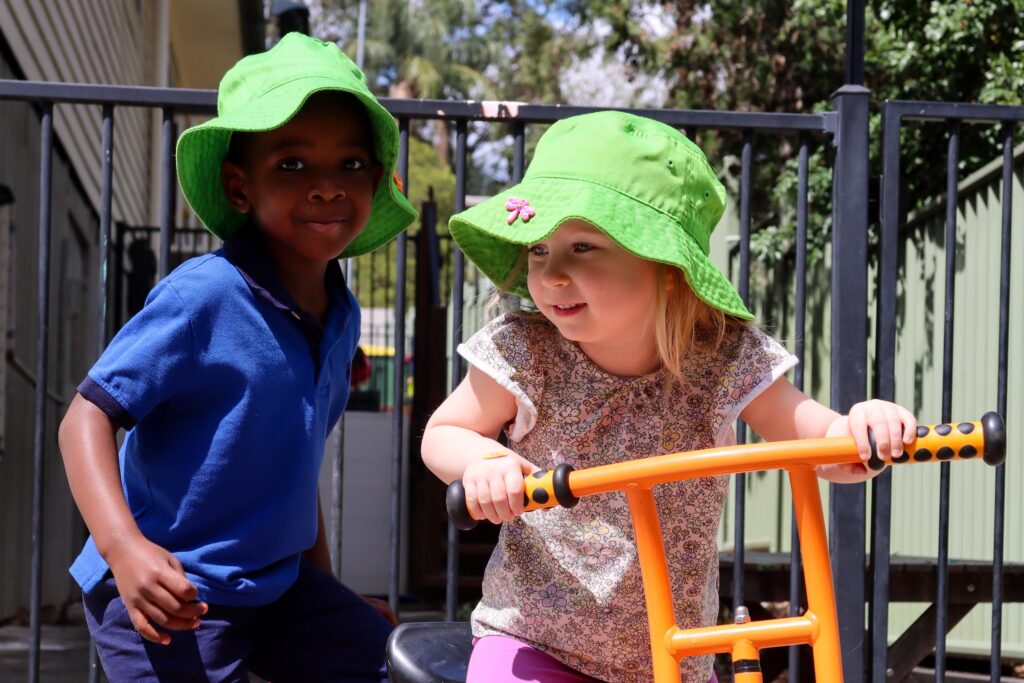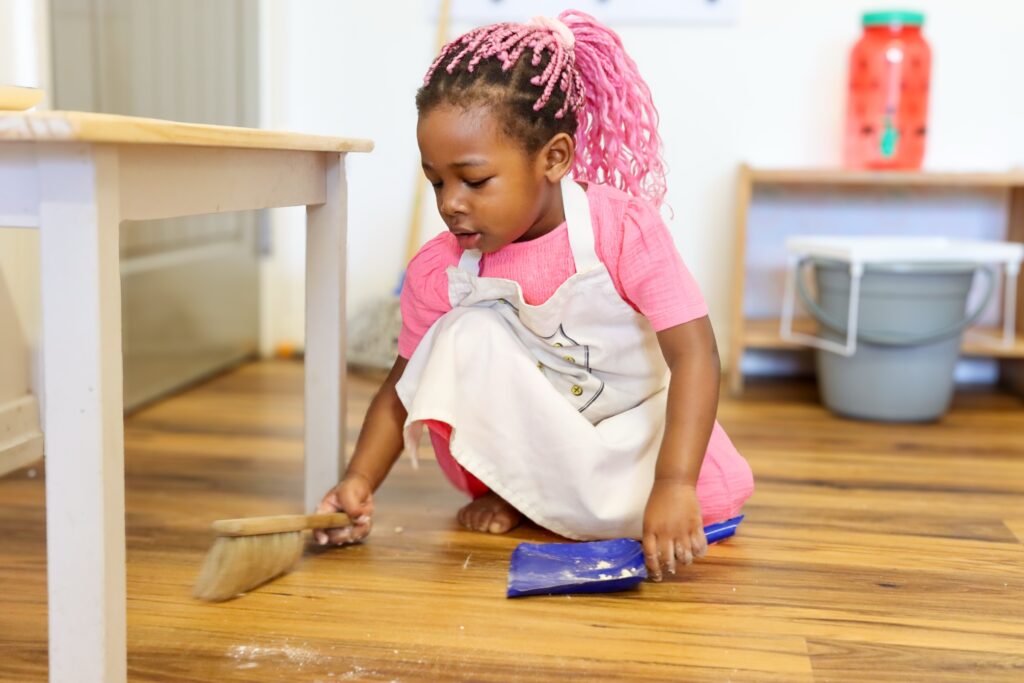Movement of Objects
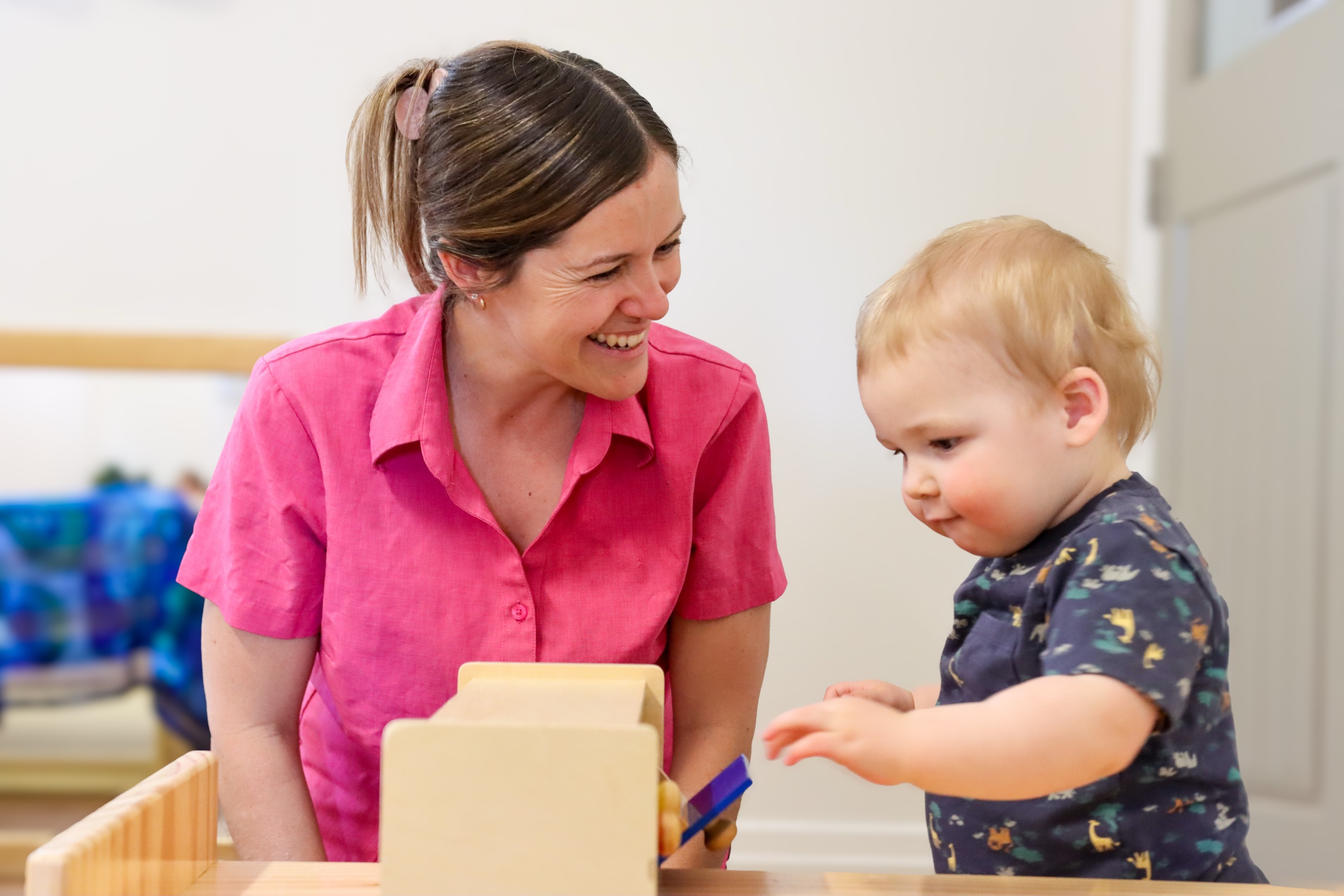
Children learn movement by imitating what they see. The Educators display to the child how to move when carrying out tasks in the environment and continually model through their own movements, from tucking in a chair and rolling a mat, to carrying a table or bench with others. Hand-eye coordination activities, such as puzzles, sewing, and gluing, give children control over their hands and bodies, fostering self-worth and trust in their abilities.
The child learns to move in a certain way as a result of the environment, both human and physical. The child will begin to move in the same way that they have witnessed others move. Educators only role model the types of movement that children in this age group can have success in coordination of when they mimic it. The Educators make slow movements so that the child can analyse each step of the action, so that they can repeat it.
Children in this age group will often want to help the Educators with heavy work or carrying large items. They will put their whole energy into achieving the task even though they may not be being effective. They have a strong need/desire to exert their strength. This can also be seen in their need to devote their whole self to completing an activity until they are satisfied. This is maximum effort.
Coordination
Coordination and Refinement of Movement happens from approximately 18 months to 5 years but will be different for each child. They will also continue refining all the time. The child has acquired voluntary movements and they are now refining or perfecting how they move. Through movement the child can organise themselves internally. They develop their personality through movement. They can’t interact with the environment unless they can move.
Through movement and interacting with the environment the child is cognitively making connections in the brain.
Movement allows the child to really understand and use their environment. They see what is happening around them and are driven internally to do what they see. They want to walk as they see adults or siblings walking. Some children need to see movement to be able to progress to the next step so at times an adult may need to eg crawl to show the child.

